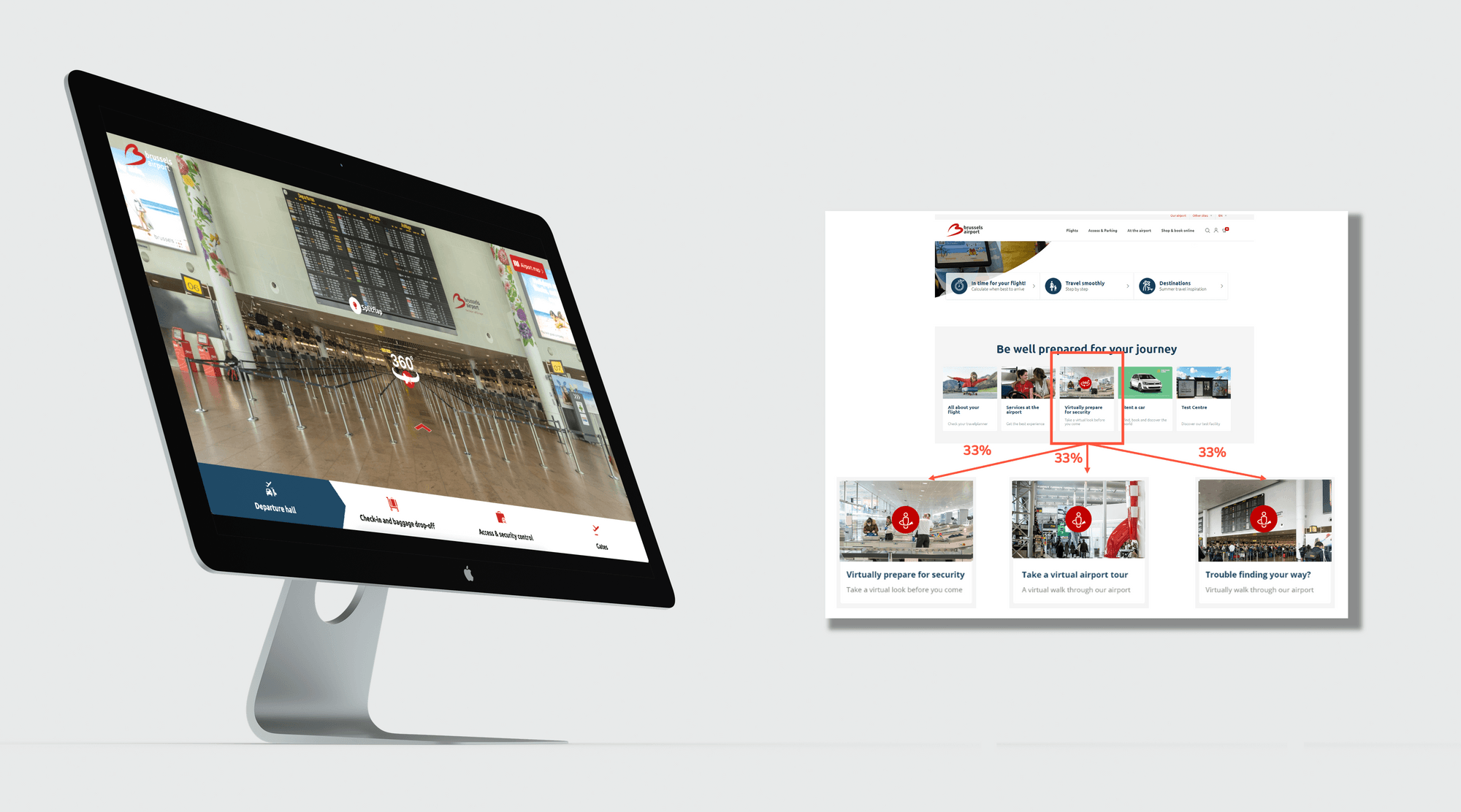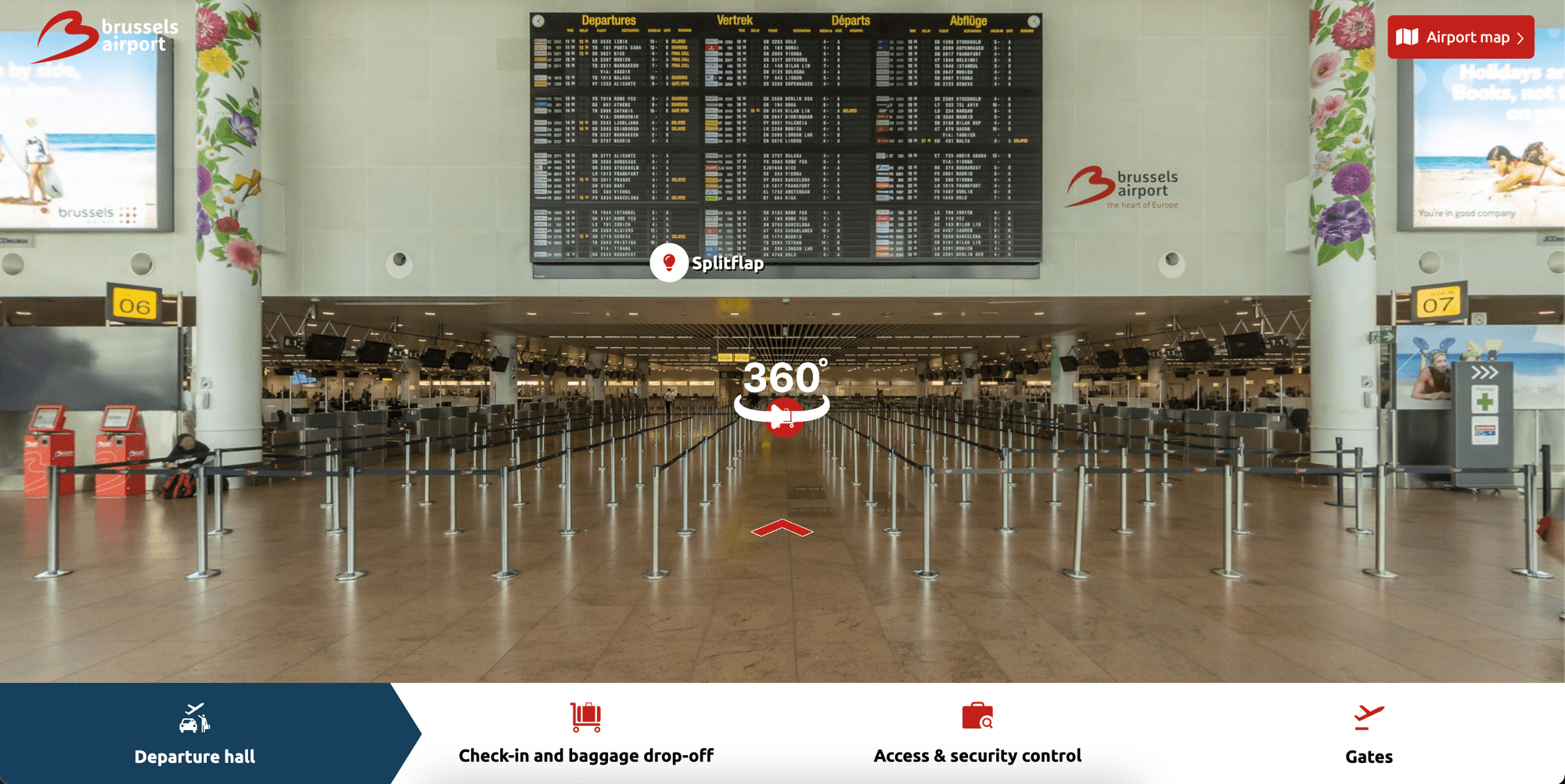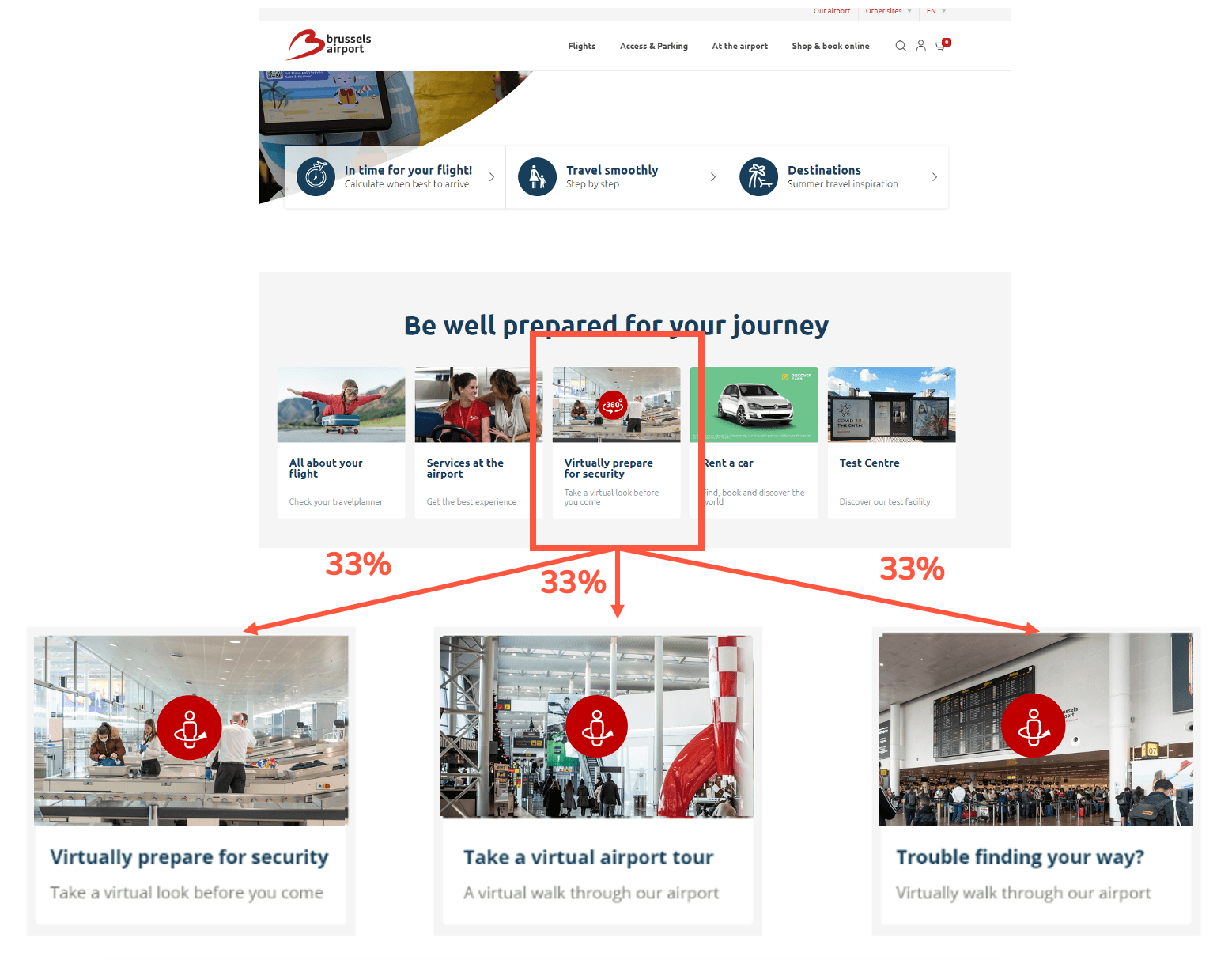There are an unbelievable number of opportunities with this technology, from commercial upselling to more advanced wayfinding to informing passengers - the sky is truly the limit (aviation pun intended). However, in this proof-of-concept, we wanted to validate if the most important and basic application was interesting enough for passengers. We needed to keep it simple.
The second part of the strategy was to define the main goals of our PoC into two validation questions:
o Will passengers be interested in this tool? Will they use it?
o Will they feel more confident to find their way during their next airport visit?
If the answers to these questions were positive, the investment to further develop the digital tour and include it in the offering would be justified.
Validation through digital experiments
Here’s what we did to get the right data for our validation questions:
- We translated our vision for the MVP to reality through co-creation in a multi-disciplinary team with the developers from Youreka, wayfinding, security screening, and digital experts of Brussels Airport Company
- We set up a digital experiment structure to get us the data and evidence we need to answer our key validation questions.
- We set up a digital tracking system to measure how passengers interact with the tool online.
- We conducted A/B/C tests with several banners and links on Brussels Airport Company’s website to get insights into which value propositions resonated most with the passengers.
- We attached a digital survey to collect qualitative passenger feedback.
- We decided on clear success criteria for the KPIs of the experiment upfront based on benchmarks of Brussels Airport Company’s website and campaign performance.
![[object Object]](https://umsousercontent.com/lib_SgVrTchGksgQdBiV/5to2tmehoshuavn2.png?w=306)



